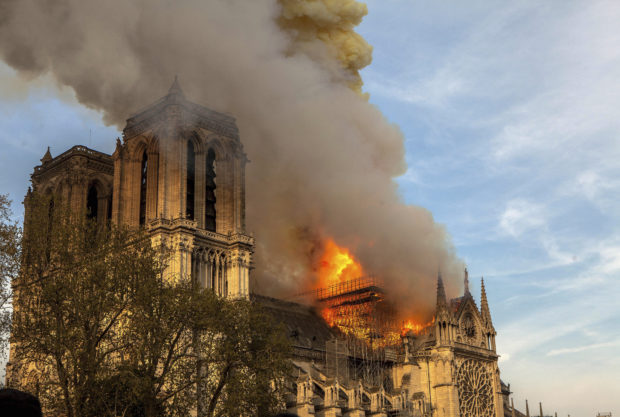Paris child at risk of lead poisoning after Notre Dame fire

This photo taken on April 15, 2019, shows Notre Dame cathedral burning in Paris. File photo / AP
PARIS — Health officials in Paris said Wednesday that a young boy needs medical monitoring because tests conducted after the Notre Dame Cathedral fire showed that he was at risk of lead poisoning.
The child, who was tested last week, doesn’t need treatment yet, the Regional Health Authority said in a statement late Tuesday. Checks are being conducted to determine whether the lead came from the April 15 fire or another source.
The child’s school, near the cathedral, was closed in July due to high lead levels found on its grounds.
A total of 162 children have been tested for lead in Paris after hundreds of tons of lead in Notre Dame’s spire and roof melted in the blaze. Sixteen of those were deemed to be just short of being “at risk” and will also be monitored as a precaution.
The results “show, on the one hand, the need to keep cleaning to limit the risk of exposure of the children to lead and, on the other hand, the importance of extending blood tests,” the health authority said.
Article continues after this advertisementAuthorities in June recommended blood tests for children under 7 and pregnant women who live near Notre Dame as they are especially vulnerable to health problems from lead poisoning and exposure.
Article continues after this advertisementCritics say authorities didn’t move fast enough to protect workers and residents from lead pollution.
Decontamination work at Notre Dame, the square in front of the cathedral and adjacent streets was suspended last month under pressure from labor inspectors concerned about lead risks.
The culture minister, who’s in charge of Notre Dame, said work will resume next week with tougher new decontamination measures.
One technique involves spreading a gel on the ground to absorb the lead. It will need to dry for at least three days before being removed. Another method will feature high pressure water jets with chemical agents to clean the soil, the culture ministry said.
Authorities said last month the main focus was ensuring that the work doesn’t generate any pollution outside the work zone.
Levels of lead remain exceptionally high at some spots inside the cathedral and in the soil of the adjacent streets, park and forecourt, according to the regional health agency. Those areas have been closed to the public since April 15.
However, no dangerous levels have been registered in other nearby streets, where tourists and residents continue to gather and souvenir shops and restaurants have reopened. /jpv